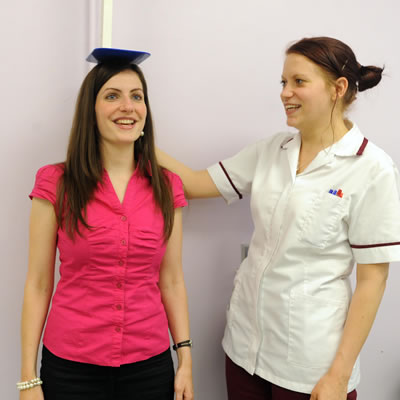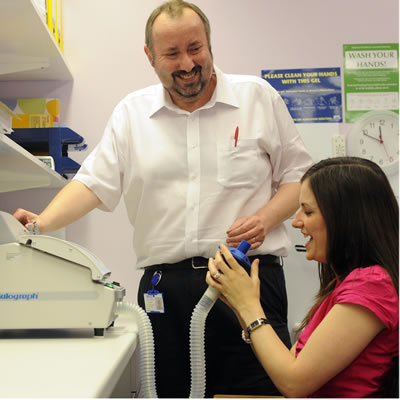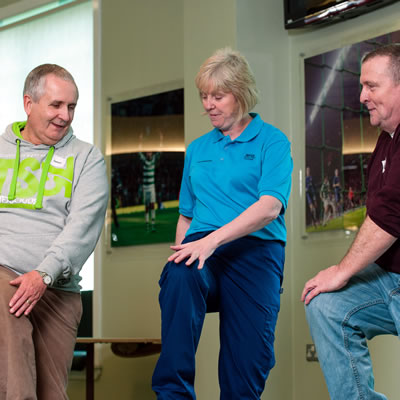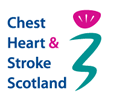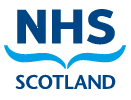Diagnosis and tests
Q: Sometimes doctors tell me I have asthma sometimes COPD - why is this?
COPD is an umbrella term that is used to describe a mix of lung conditions. This includes chronic bronchitis and emphysema. Most people will have a mix of conditions. It might be that your doctor suspects that you have a greater degree of chronic asthma which can have similar symptoms but the cause is different.
Q: What are the similarities/differences between Asthma and COPD?
Both diseases cause narrowing of the breathing tubes (airways) which can cause breathlessness and wheeze. However, some of the airway narrowing in asthma may be reversible (though not always). The airway narrowing in COPD cannot be reversed. In both cases, taking your inhalers correctly can improve your symptoms.
Q: Why do I have to keep doing breathing tests?
These tests will check if your COPD is being well controlled or not. Your treatment can be adjusted depending on the results of the tests.
Q: Can I have normal spirometry and COPD?
Yes, some people with pure emphysema and no airways disease may have changes which can only be seen in more detailed lung function tests. For more information please see our sections on
Peak flow and
Spirometry.
Smoking
Q: Why have I got COPD? I have never been a smoker.
There are different causes of COPD. It may be that you have chronic asthma, a genetic deficiency or were exposed to an environmental irritant as a child or when at work. You can have COPD if you are exposed to passive smoke or second hand smoke from another person.
Q. Why should I stop smoking?
Quitting smoking is the one most important thing you can do to improve your COPD or prevent further lung damage. It also helps improve your general health and reduces the risk of developing other serious health problems.You can get lots of help and support to do this. See our section on
help to stop smoking.
Q: I only smoke cannabis - am I still at risk?
Yes. There is evidence that COPD is linked to cannabis use especially when mixed with tobacco. You are less likely to use a filter and the smoke you inhale is hotter than that of tobacco. Some types of cannabis are much stronger than others. Some research suggests an increased risk of fungal and respiratory infections. Doctors are starting to see younger people with emphysema if they have been long term cannabis users.
Inhalers
Q: What’s the best inhaler?
Your doctor or respiratory specialist will advise you on the best inhaler for you. This may depend on your symptoms, if you can use one type of inhaler more easily than another or the best way to get as much of the medicine in to your lungs. Some inhalers are for
prevention of symptoms. Some are for
relief of symptoms and some contain different types of medicine. Which ever inhaler you use you should have your inhaler method checked by your healthcare professional to make sure you are using your inhaler correctly to get the most benefit from it. For more information see our section on
A practical guide to inhalers
Q: Why are my inhalers different to my neighbour?
Your doctor has prescribed for you not for anyone else. You may not have the same condition, cause or symptoms. Never use someone else’s inhaler. If you are concerned that your inhaler is not working as well as it should, see your GP, practice nurse or pharmacist.
Q: How quickly does my inhaler work?
There are three main types of inhaler Short acting relievers, long acting relievers and preventers. Short acting relievers work quickly to relieve symptoms. Long acting relievers are usually taken twice a day and may take 30 minutes to work but the effects can last up to 12 hours. Preventers have a combination of inhaled reliever and steroids which help to reduce inflammation. They do not work instantly but are taken regularly over a period of time for best effect. You should have a review of how you take your inhaler at least once a year to make sure you are using the most effective method or inhaler technique. Your GP, respiratory nurse or a pharmacist can help with this.
Q: How do I clean my inhaler?
This will depend on the type of inhaler you use. The manufacturer should give instructions with you inhaler. You can ask at your pharmacy or see our section on
A practical guide to inhalers for a step by step guide.
Nebulisers and oxygen
Q: Why won’t my doctor give me a nebuliser when it made me feel so much better when I was in hospital?
Once stable most people don’t need nebulised treatment although they are helpful when your breathing is worse than usual. Nebulisers should only be used when prescribed by your doctor or while you are in hospital. Most people with COPD symptoms can be successfully controlled by medication and inhalers if they are taken correctly. If you do need a nebuliser you will be given details of how to get one. This may vary depending on where you live. You should not buy a nebuliser unless advised to do so by your healthcare professional. Your GP may not prescribe the liquid medication to go into the nebuliser unless the nebuliser has also been prescribed as part of your treatment plan.
Q. How do I clean my nebuliser?
You should follow the instructions from the manufacturer for your nebuliser. It should be cleaned daily or after each use. Use warm water and a mild detergent. Leave all the parts to air dry.
Q: Why don’t I have oxygen when I'm obviously breathless?
Being breathless and needing oxygen are sometimes different. Not everyone who is breathless will need oxygen. Some people with COPD are breathless because their airways are narrowed but they still have normal levels of oxygen in their blood. Anxiety, stress or having to work harder to breathe can make you feel breathless. Correcting these causes can help you to cope better with your breathing and help you to feel more comfortable. For more information see our sections on;
Daily living
Q. Can I get a Blue Badge for parking?
There are strict rules for blue badge applications. If you receive High rate mobility component of the Disability Living Allowance or Personal Independence Payment (moving around component) or the mobility supplement of a War pension, you will be entitled to a blue badge. If you can only walk 50 meters or less you may also be eligible. See the link to
Scottish Government website for more details and application.
Q. I am caring for someone with COPD. Can I claim Carer allowance?
You may be able to claim if the person you care for has a qualifying benefit themselves. For example attendance allowance. You have to be over 16 years old, not in full time education. If you care for over 35 hours a week and earn less than £100 per week. If you need help to make a claim seek help from your local carer organisation such as
Carers UK website.
Q. How do I get some aids and adaptations at my house?
You should contact your local authority and ask for an Occupational Therapy assessment. Your GP or practice nurse may also be able to help you by making a referral or get some small equipment items for you. They would have to make a referral for any adaptations to your home. An adaptation is any change to the structure of your home for example changes to install a stair lift, shower room or a ramp outside your house. There may be a waiting list for assessment and also there may be a financial cost for part of the cost depending on your income. Some local authorities can give you small items of personal equipment by mail order or from their internet websites.


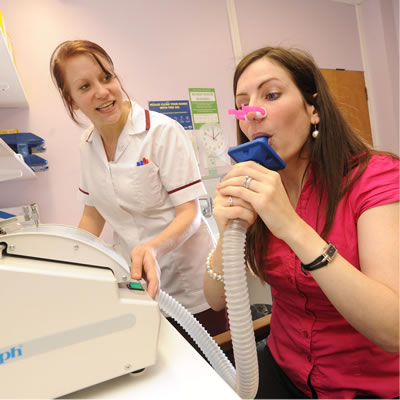 When you have your test.
When you have your test.